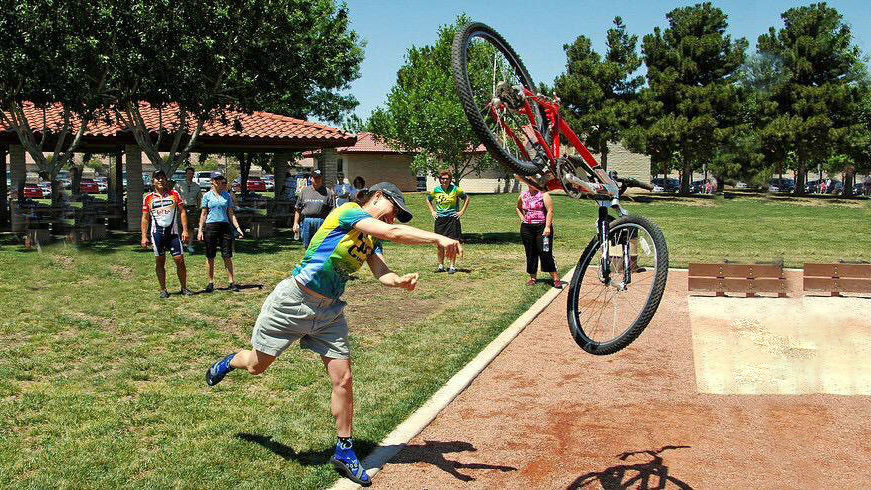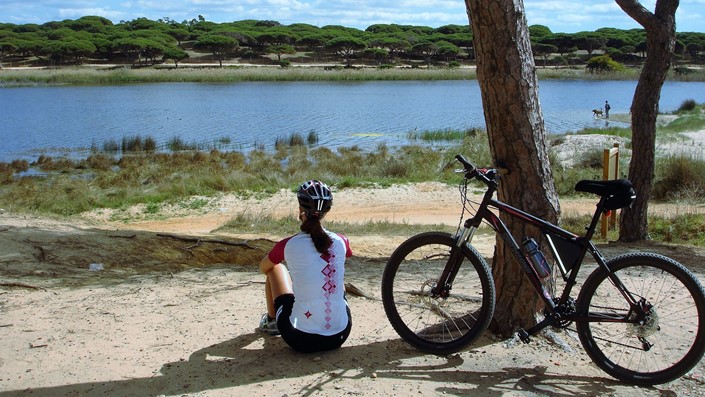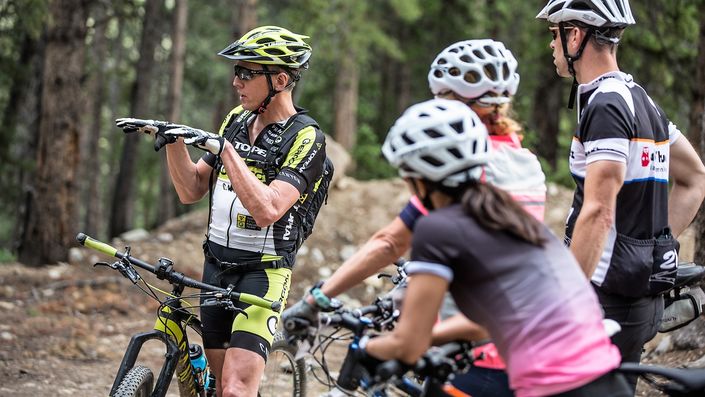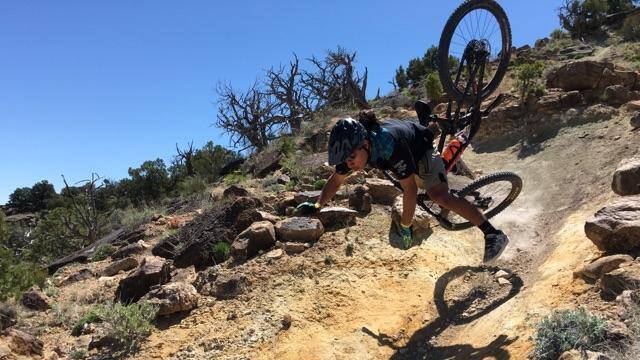Recently I spoke with a couple of people who were considering giving up on riding mountain bikes due to a combination of both negative experiences and fear of crashing. When it feels like you’ve hit a wall with your riding, don’t give up! Here’s some advice that will help you address your issues and overcome your fear of riding MTB.
Take a step back
First, slow down and take a step back from your bike. Consider taking a week or two off from riding so you can reset and have a fresh mindset towards your mountain bike.
Sometimes we need to actively reflect upon and ponder our situation. Problem solving begins with identifying the problem. If you take time to think about the issues you are having on your bike, maybe you will find connections you never thought of on the trail. Maybe you keep crashing on a certain type of feature or terrain? Maybe it’s slippery roots? Or uphill switchbacks? Taking a moment to pause and reflect can sometimes allow you to put things into perspective and may allow you to make connections in your fear and experience that you may have overlooked, then target them.
Fear and experience can often give us tunnel vision, much like how time slows down during a crash, and it’s mainly this moment and feeling that we remember. This means we don’t often remember that it was a rock that clipped the pedal that caused the crash, and that if you make sure your pedals are level while making that corner you will make it easy.
Ride easier trails and tackle easier obstacles. This can help you regain some confidence and build up some momentum to help you overcome harder challenges. If you’re struggling with a specific trail feature or aspect of trail riding, it’s easier to reset and work your way back up to the point you’re struggling with.
Share your concerns
We don’t often share our concerns, but it can be the easiest way to overcome our fears and get our riding back on track. Letting those you ride with know that you’re struggling can immediately help you on the trails. If your ridding buddies don’t know you’re struggling, they won’t wait for you or let up on those sections of trails you find difficult. This might rush you forward and not give you the time you need to address your fear and anxiety.
Riding with a group of people who are aware of your concerns will often open a discussion of their fears, as well, which gives you the opportunity to help each other out. Maybe one person struggles with downhill speed, while another is afraid of wet and slippery trails. Knowing this gives the group an opportunity to help each other out with tips and inspire confidence — after all, acknowledging your fears is the first step in conquering them.
Working with a group of people also allows them to assess your fears and concerns over a longer period of time, which may help form a better understanding of your problems. Someone riding behind you might notice that you drop your inside pedal during a corner, or that your seat post is too high to confidently ride down a hill. We often get ourselves stuck in ruts that we do not know how to get out of; an outside perspective might help you see the way.
Maybe it isn’t you
If you feel like you’re hitting a wall and it’s causing you anxiety and fear, consider having your bike looked at by a professional bike shop. There are so many things to know about mountain bikes, so don’t be surprised if it’s your bike setup, especially if you're new at it. Taking the time to look at your bike setup and fit is a part of 'taking a step back,' as you need to take a clear look at your bike and/or be able to listen to your local bike shop's advice with a clear head.
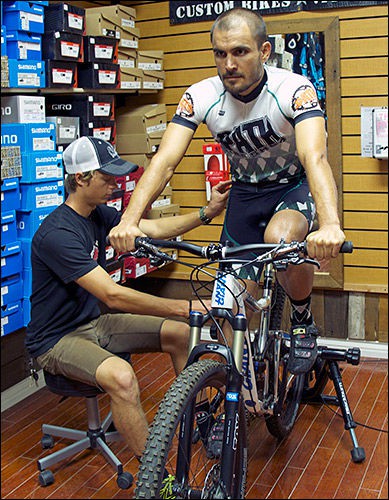
You would be amazed at how many people don’t understand the importance of moving your saddle down for descending (like with a dropper post), as well as how many people don’t realize their brakes aren’t working nearly as well as they should be. Problems like these are easily diagnosed by your local bike shop, but rely on you sharing your troubles and concerns with your shop mechanic or salesperson. Let them know the issues you are having (i.e. afraid of descending) so they have a good place to start looking.
In addition to a mechanical assessment of your bike, the bike shop can move on to a proper bike fit and determine what changes can be made to help you on the trails. If it’s your first bike, or maybe you bought it somewhere that didn’t do a proper bike fit (i.e. online or a department store), getting your bike fit properly can be quite insightful. It could be a seat angle here or a longer stem there, or you could end up finding you're on a bike frame that’s simply a size too big for you.
Ok, maybe it is you
If everything checks out fine with a proper mechanical inspection and bike fit, you may have to admit that the problem is you... but don’t fret! Normally, if you are doing something weird, different, or wrong, you will realize it in your 'taking a step back' phase, and if you don’t, your friends will when you share your concerns. When you are new, mountain biking problems are often simple and easily worked out, so although it may seem like you’ve hit a tall wall, a few simple reminders while out on the trails can help you sort it out.
If you’ve made the leap from road riding to MTB, one very common issue is lack of mobility in the cockpit. For a lot of recreational road riders, position in the saddle is relatively static — well, static compared to MTB. Roadies often underestimate the amount of movement needed on the trails. For example, if your saddle is always set to maximum pedal efficiency height, you’re going to have a bad time. When learning descending, you need to drop your saddle out of the way and get your butt right over top of your rear axle, whereas in aggressively climbing, you need to be hunched over your bars, and you may need to do both of these in the same 50 meters of trail. Leaning into corners is another technique that needs a lower saddle height, otherwise crashing is eminent. If your friends aren’t able to help fully and you still feel like you’re struggling, consider taking a lesson or two.
RELATED: Bike Fit: Does size matter?
Lessons are always worth the money as they can often quickly address concerns and issues that you know about, and some you don’t. When we take a lesson, we assume the role of the learner and this allows us to part ways with old habits more easily, as well as develop new ones. Having someone pay full attention to your riding with the intent of helping can quickly identify the very specific skills you need to work on. A good instructor can also help put together a step-by-step plan that you can follow to ensure you grow as a rider which will get you where you want to be faster than expected.

TIP:
If you're looking for lessons, start by checking with your local bike shop or bike park. You might even consider online coaching.
Get redemption
The most important part of building up your skills is to get redemption on those things that made you doubt in the first place. Taking your newfound confidence back onto the trails — to tackle that slippery downhill section or to crush your way to a new KOM on that techy climb — will re-ignite the flame you had for riding mountain bikes in the first place. You have to remember that every accomplishment on an MTB has a level of satisfaction; whether it’s as simple as riding a trail without walking your bike at times, or it’s finishing first in a big race, the sense of accomplishment is the same.
Yes, riding mountain bikes can be high impact and the risks can be serious. It’s understandable that you may find yourself bewildered and feeling intimidated sometimes, but hang in there — you are climbing mountains, after all.
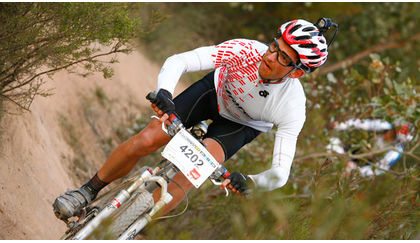
RELATED ARTICLE:
5 Tips to make mountain biking more fun!
Mountain biking is the most fun you can have on two wheels, but can be a little tough when starting out. These tips will help newbies get their confidence on the trails... READ MORE
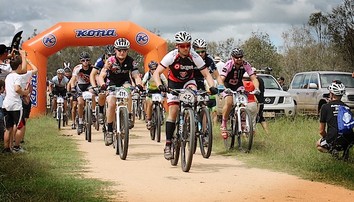
RELATED ARTICLE:
How to select teammates for a 12 or 24hr MTB enduro
An MTB enduro or 24 hour is probably the most fun to be had on a bike with mates. Here's how to choose them!.. READ MORE
